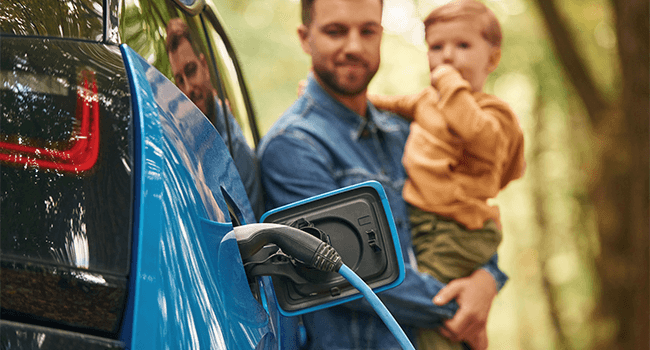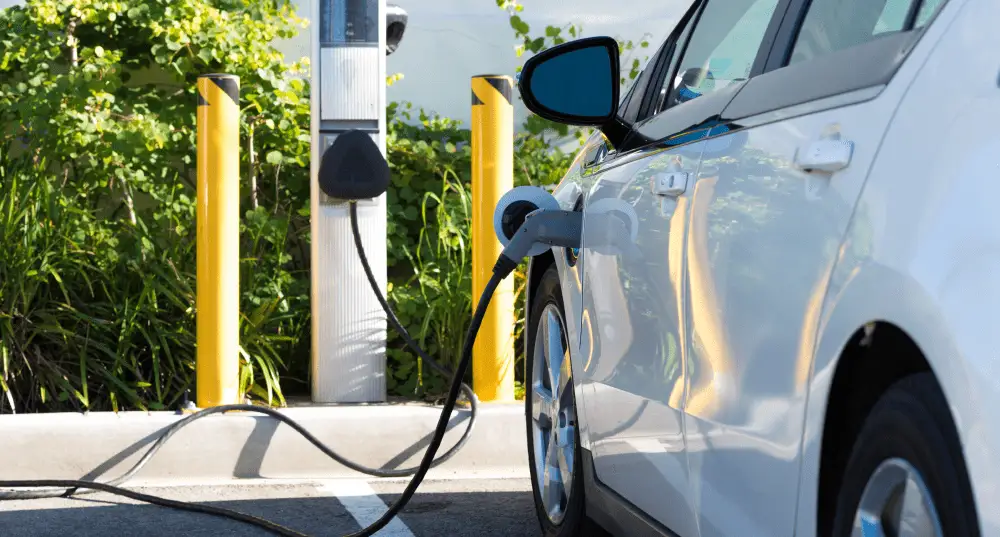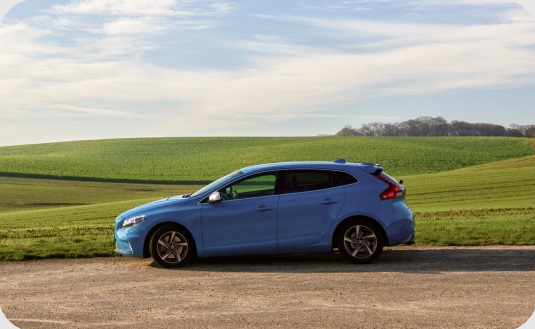What is a hybrid car and how does it work?
The future of cars in Australia is moving towards more environmentally-friendly models, with hybrid cars looking to be the most popular choice.
2019 data from Roy Morgan shows nearly 1.4 million Australians are looking to a hybrid vehicle for their next car - new or used - while a further 537,000 want an electric one.
Research from JP Morgan meanwhile suggests that hybrid cars will comprise 23% of all vehicles worldwide by 2025, just five years away.
Hybrids have come a long way since the first mass-produced model, the Toyota Prius, was first introduced back in 1997. But not everyone is entirely clear on what they are and the benefits they can provide.
Here, we’ll talk about hybrid vehicles and how you can finance the purchase of one.
What is a hybrid car?
A hybrid car is a car that uses a combination of both an electric motor and an internal combustion engine. Therefore, it is a hybrid of an electric car and a petrol car. There are three common types of hybrid vehicles:
- Parallel hybrids The most common type of hybrid (the Toyota Prius is this type), the parallel hybrid works as described above - the car's wheels are powered by electricity, by petrol or by both working together.
- Range extender hybrids These hybrid cars only use the conventional engine to produce electricity that recharges the electric batteries. The engine never drives the car, and these models (such as the BMW i3) can drive further on an electric motor than parallel hybrids most of the time.
- Plug-in hybrids This type of hybrid can be plugged into an electric outlet to charge its batteries, and is basically a halfway point between full electric vehicles and conventional hybrids.
There’s generally little difference felt by the driver, but one of the main benefits of driving a hybrid model is the environmental benefits as well as better fuel economy. Depending on the car, there are also some performance benefits as well compared to gasoline cars. A hybrid car could be a good way to save money on fuel while also offering a nice balance for those who maybe aren’t quite ready to go full electric car yet.
How do hybrid cars work?
The two different systems work in conjunction with each other and switch automatically depending on the road conditions:
-
The electric motor is generally used when the car is still and starting, resulting in less fuel consumption from a starting position
-
The electric motor is also generally used when driving at lower speeds, such as in suburban areas
-
The petrol motor kicks in at higher speeds (such as the freeway) or when the battery level gets to a certain level of depletion
Most types of hybrid cars aren’t charged by a power outlet like an electric vehicle. Instead, the batteries are charged through regenerative braking and by the internal combustion engine.

What the dashboard of a hybrid car can look like. Source: Hyundai (2018 Sonata Hybrid)
Hybrid cars have sensors inbuilt that can automatically detect when certain driving conditions (such as speed or terrain) are met, and it will prioritise the electric or gas motor accordingly.
Popular hybrid car models
The increasing popularity of hybrid vehicles in recent years has seen more and more manufacturers offering them, and they've become more affordable in the process.
Here are some of the more popular and ‘best’ hybrid cars according to Cars Guide:
|
Model |
Price |
Fuel use |
Power |
|---|---|---|---|
|
Toyota Corolla SX Hybrid |
$28,370, plus on-road costs |
4.2L/100km |
72kW at 5200rpm (petrol) 53kW (electric) |
|
Toyota RAV4 GXL Hybrid |
$41,140, plus on-road costs |
4.8L/100km |
131kW at 5700rpm (petrol) 163kW (electric) |
|
Mitsubishi Outlander PHEV |
45,990 plus on-road costs |
1.7L/100km/54km EV range |
87kW at 4500rpm (petrol) 120kW (electric) |
|
Hyundai Ioniq |
$40,990, plus on-road costs |
3.2L/100km (claimed), 63km EV range |
77kW (petrol), 44kW (electric) |
|
Mercedes-Benz C 350e PHEV |
$75,814, plus on-road costs |
2.1L/100km/50km EV range |
155kW (petrol) 90kW (electric) |
Benefits of hybrid cars
1. It’s cleaner
You know about the fuel savings and lower carbon emissions, but consider also you’re not dealing with refined oil dug up out of the ground. Petrol and diesel engines can be smelly, and can also leak. Consider your garage floor - with an electric car you no longer have to worry about getting stains on the floor.
Add to that, you can idle without a worry in the world, while also breathing in cleaner air. If everyone on the road had an electric vehicle, there’d be no need to hit that recycled air button when a smelly car drives past.
In addition, think of the noise pollution - electric cars run quieter, which can reduce fatigue on a long drive, and also make your stereo sound better, without having to raise it to ear-splitting volumes.
2. Safety benefits
Without a heavy engine up front (or in the back, depending on your car), an electric vehicle can have some added safety benefits. The battery packs are usually low to the ground, which can lower your centre of gravity and also lower your chance of rolling over. This can also improve handling as you go around bends and corners. Additionally, not having an engine that is essentially powered by tiny explosions (hence the term combustion) can also make your car safer in the event of a crash.
3. Never stop at a fuel station again
For most users, the daily drive consists of a relatively short commute to work and home again, plus maybe tooting around on the weekend. Popular electric cars these days can frequently achieve about 400km or better on a single charge, which is more than enough for most people on a daily basis.
This means you’ll potentially never have to stop at a fuel station again. While using no fuel is a well-documented saving, also consider all those times you’ve been tempted by overpriced snacks, a choccy milk, and a dirty street pie after filling up. Potentially good for your waistline, and potentially good for the wallet.
4. Extra storage space
By not having an internal combustion engine, electric cars have a lot more space if they are the same proportions as their gas guzzling cousins. Often this results in having a ‘frunk’ - a portmanteau of front and trunk. In a Tesla’s case, the frunk is usually big enough to fit a couple of weekender bags
5. Lower luxury car tax
If you have the privilege of looking at cars $70,000 and over, the good news is that ‘green’ cars come with a higher luxury car tax threshold. That is, cars that consume less than 7L/100km combined. From 2020, the threshold for regular cars is $68,740, while for green cars it’s $77,565.
After those thresholds the rate is 33c on the dollar, which means on a $100,000 vehicle (before on-road costs) that is potentially a difference of around $2,911 in taxes. Again, the definition of ‘fuel efficient’ vehicles is pretty generous - 7L/100km combined. That goes for a lot of hybrids and smaller vehicles, and yes - electric vehicles count, too!
6. Cheaper registration and stamp duty
Depending on what state you live in, if you have an electric car, you could get a discount on your registration and stamp duty. According to electric vehicle manufacturer Tesla, various discounts apply in these states:
-
ACT: Electric vehicles pay $0 stamp duty, and a 20% discount on registration.
-
Victoria: Electric vehicles are exempt from the extra rate that ‘luxury vehicles’ pay in stamp duty, paying $8.40 per $200 of market value, as opposed to $18 for other vehicles. There is also a $100 annual discount on registration.
-
Queensland: Both electric and hybrid vehicles pay a reduced stamp duty rate. It’s $2 per $100 up to $100,000 in value, and $4 for amounts over that. This is compared to a flat $6 per $100 for other vehicles.
With car expenses potentially adding up to thousands of dollars in any given year, it’s nice to be able to get a few discounts here and there on some big ticket items, namely stamp duty and registration.
Car loans for hybrid cars
If every new car buyer chose the lowest emissions car available, our national average carbon emissions would improve by 50%.' – National Transport Commission.Buying a car isn’t cheap, and some (not all) hybrid models can be a bit more expensive at the time of writing than the standard petrol car, although this could soon change. A car loan is one such solution you can employ to pay for the purchase of a hybrid vehicle, but there’s a big range of loans to choose from, and some of them don’t have terrific rates.
That’s where loans.com.au comes in. Our Clean Green Car loan rewards those buying hybrid vehicles or more fuel-efficient petrol cars by giving them a .70% discount on our standard car loan rate, which is already extremely competitive to begin with.
Getting a car loan with a good interest rate can save you hundreds if not thousands over the term of the loan, so click ‘apply now’ to get started or call 13 10 90 to speak with one of our lending specialists.
Find out in under 2 minutes if you qualify for one of our low rate car loans.

Other helpful resources:
About the article
As Australia's leading online lender, loans.com.au has been helping people into their dream homes and cars for more than 10 years. Our content is written and reviewed by experienced financial experts. The information we provide is general in nature and does not take into account your personal objectives or needs. If you'd like to chat to one of our lending specialists about a home or car loan, contact us on Live Chat or by calling 13 10 90.





















